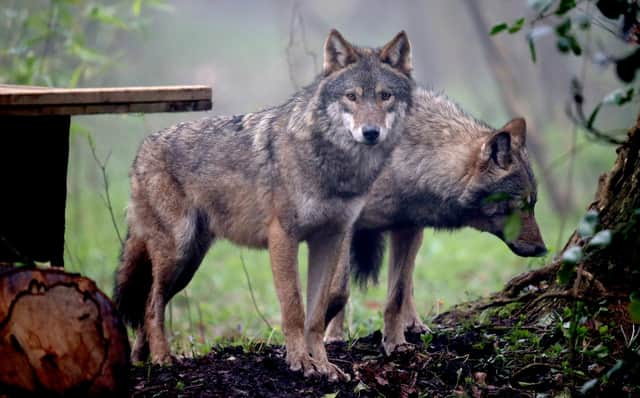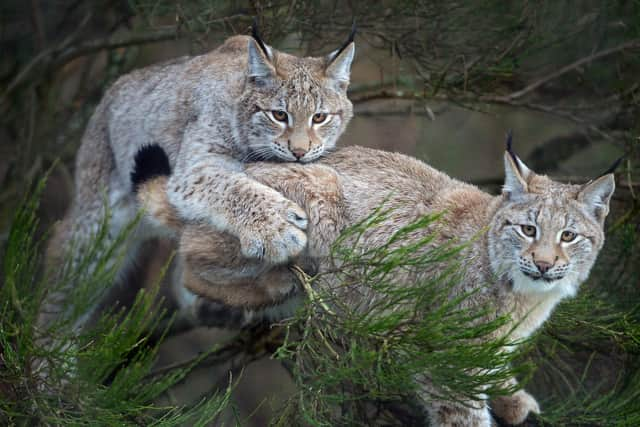How restoring native predators can help tackle the invasive species crisis – Dr Joshua P Twining and Professor Xavier Lambin


[This article is a version of one first published by the Conversation website. Read the original here.]
In Scotland, and across Britain and Ireland more widely, we have been particularly successful, long ago extirpating the last of the wolves and lynx with which we once shared ecosystems and confining other predators to small remnants of their historical ranges.
Yet, there is now mounting evidence that those once-hated native predators play an essential role in regulating prey. Furthermore, new evidence is emerging that the eradication of native predators has, in part, led us to the invasive species crisis we face today.
Advertisement
Hide AdAdvertisement
Hide AdAt the same time, humans have transported species we value outside of their native ranges. By introducing animals, plants and microorganisms into ecosystems where they did not evolve, we have inadvertently created invasive species which drive the extinction of native ones by eating, competing with and exposing them to new diseases. Over the last century, invasive species were the main cause of vertebrate species going extinct.
Mounting evidence suggests those once-hated native predators are essential for regulating invasive prey. In fact, our new research, published in Global Change Biology, shows that the eradication of native predators has partially caused the invasive species crisis we face today.
But we also found that all is not lost. By examining a series of surveys which included public sightings of grey squirrels and pine martens – a small carnivore and member of the weasel family that was hunted until legal protection came into effect in the 1980s – between 2007 and 2019 in Ireland, we showed how the return of a native predator can cause the rapid decline of a long-established invasive species (the grey squirrel) over entire landscapes.


We studied populations of both species to discover features that determine the ability of a native predator to control an invasive species following restoration.
These include the capacity of the predator to switch between prey, the failure of the invasive prey to recognise or respond to the threat of a newly recovered predator and the availability of areas that the prey can hide in to escape.
From wolves hunting non-native Corsican moufflon in the Mercantour mountains of southeastern France to red-banded snakes predating invasive bullfrogs in China, native predators tend to preferentially hunt invasive prey over their native counterparts by a factor of two or even three.
Understanding why this is the case can reveal when and where restoring native predators will help control an invasive species. For instance, sika deer are native to East Asia but became invasive in Scotland, Ireland and across mainland Europe after they were introduced in the late 18th century.
The Eurasian lynx, a predator of deer which was once widespread throughout Europe, was eradicated from most of its former range by the beginning of the 20th century. Like the grey squirrel with the pine marten, sika deer evolved in the absence of lynx and are likely to behave in a similar way when confronted with a native predator – by failing to recognise the threat.
Advertisement
Hide AdAdvertisement
Hide AdLynx tend to switch between the species of deer they hunt and have a proven ability to suppress deer populations. There are also no areas available to deer that lynx cannot also access. These factors combined suggest that restoring lynx populations will benefit ecosystems in which sika deer are invasive. Lynx are likely to have a bigger effect on these invasive populations where alternate prey (like roe deer) are scarce or absent, as in Britain and Ireland.
Natural recovery of some large native predators in mainland Europe is well underway thanks to conservation efforts and legal protection. Despite intensive farming and urban sprawl, all it has taken for species to recolonise their historical range was for people to stop killing them.
Evidently, unaided recovery of extinct predators will not occur in insular Britain. Any active reintroduction of large native predators would require a societal consensus that does not exist presently.
Opponents readily claim that there isn’t enough space for such wide-ranging animals on the crowded British Isles. Yet the view that large carnivores can only persist separate from people in large, protected areas such as present in North American wilderness or in fenced reserves in South Africa has been thoroughly falsified.
The alternative scenario of managed co-existence relies on people and predators learning to again live alongside one another. It plays out now, with pumas and lynxes prowling the parks of San Francisco and Swiss towns; wolves reproducing in crowded and intensely agricultural landscapes of Belgium and Holland; and black bears frequenting suburbs across America.
Carnivores are highly adaptable and can live alongside us, delivering ecosystem services, and occasional annoyances, in our highly altered, human-dominated worlds.
Opposition to predator recovering is not a space issue but a tolerance issue, reflecting a lack of awareness of the benefits of predator recovery such as the suppression of certain established invasives and over-emphasis of the inconveniences that are well tolerated in other countries.
Our research offers an ecological justification for restoring native predators: to help control and limit the spread of invasive species.
Advertisement
Hide AdAdvertisement
Hide AdHowever, it would be naive to pretend this is the only important factor. Living alongside large carnivores does come with consequences, including occasional losses of livestock and pets that cannot be shied away from, but can be reduced with proactive management.
Achieving the requisite wide societal acceptance for the restoration of any native predator population thus must encompass considerations of the likely societal benefit in easing the crisis caused by damaging invasive species and plans to mitigate the inconvenience and losses incurred by a disproportionally affected minority.
Dr Joshua P Twining is a postdoctoral research scientist at Cornell University in the US; Professor Xavier Lambin is chair in zoology at Aberdeen University.
This article is a version of one first published by the Conversation website.
Read the original here.
Comments
Want to join the conversation? Please or to comment on this article.
